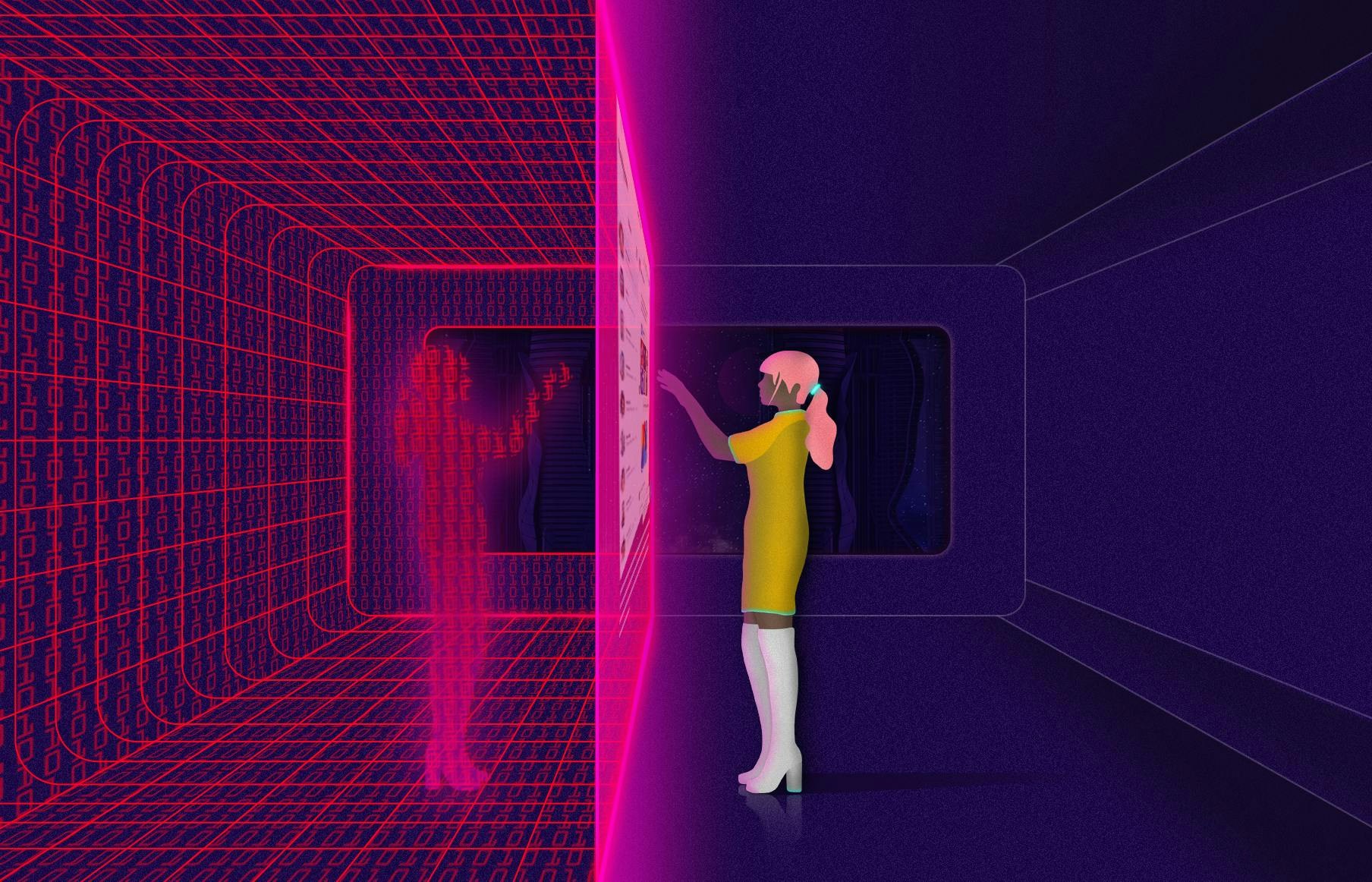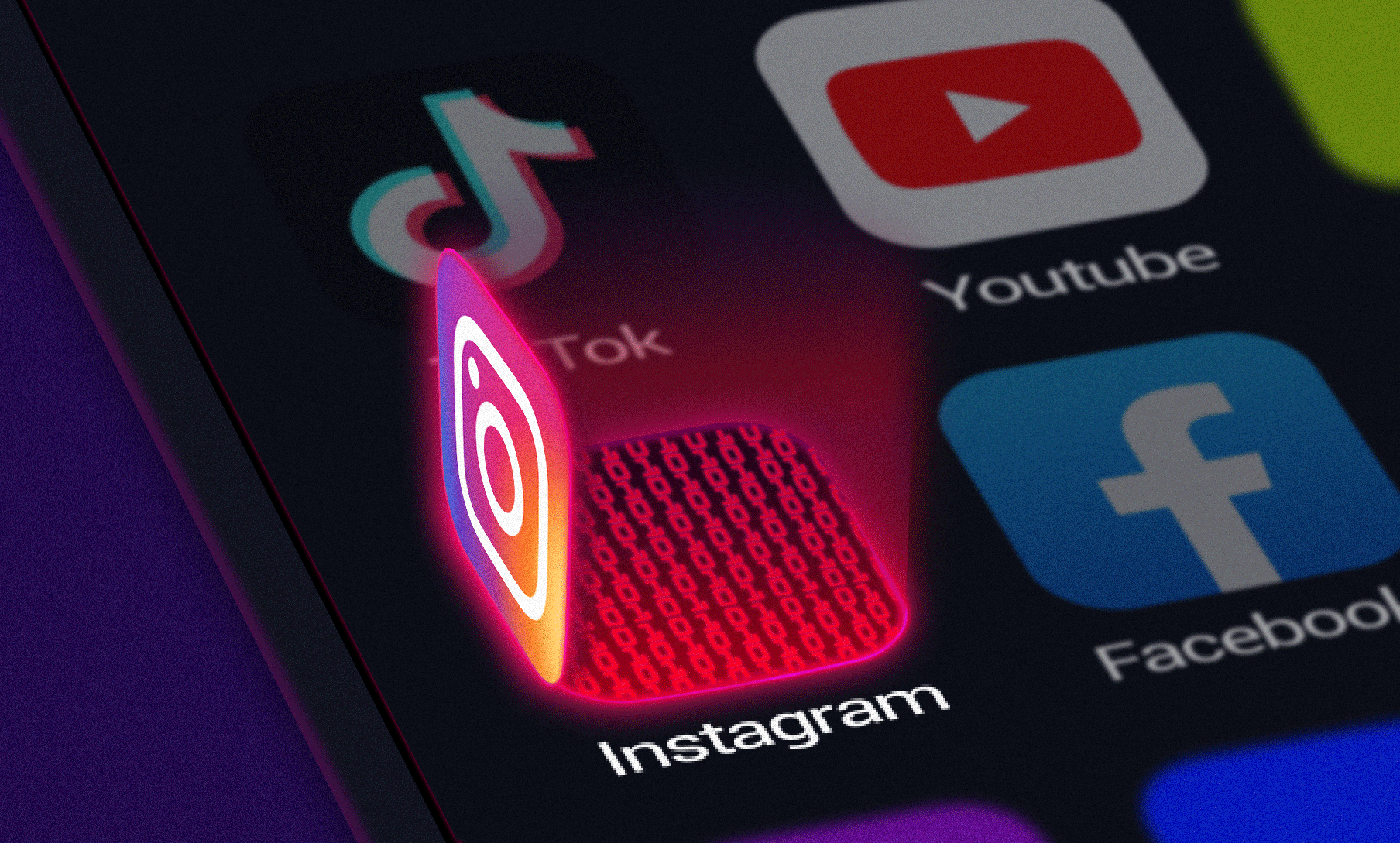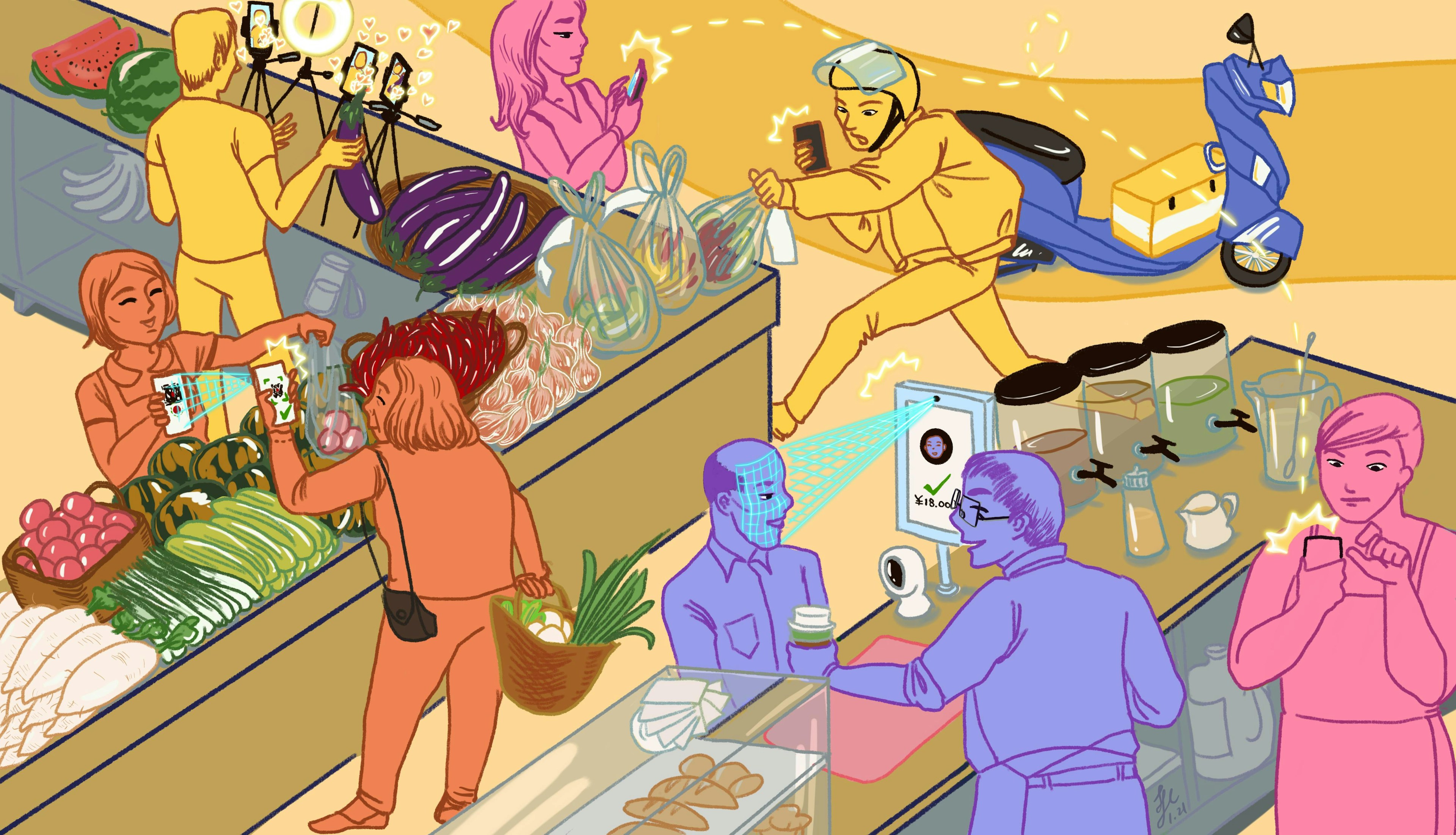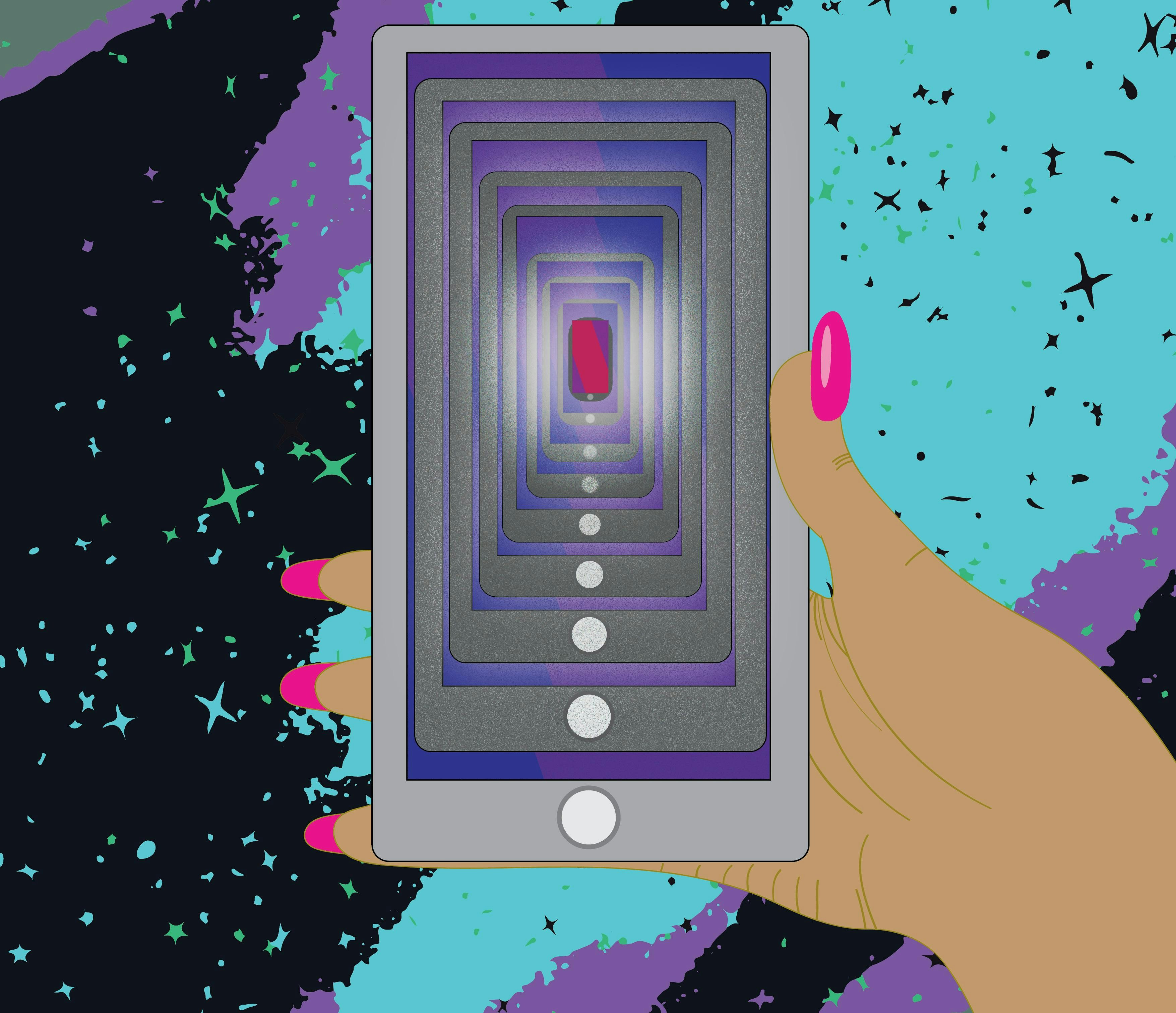Conviction, made to measure: Meet the virtual influencers

The YouTube video starts with a familiar setup, seen on countless channels. Set against the backdrop of a stylish living room, a young woman—call her M—sits centred in the frame.
Storytime videos are a micro-genre of YouTube content. They are informal and intimate, one person facing a camera in their living room or bedroom, recounting something that happened to them. They span a broad spectrum of topics, from the mundane (I found my dream purse while shopping) to the insane (I survived a plane crash) or even traumatic (I watched my friend die).
They’re simple, effective, and extremely popular.
M’s story starts with her ordering a rideshare to the beach. Once in the car, the tale takes a troubling turn: A fellow passenger sexually assaults her. The driver does nothing. M gets out on the side of the freeway, walking 10 minutes to the nearest exit. She recounts feeling violated, sickened, upset.
There’s just one problem: It never happened, and “M” isn’t even a real person. She’s a CGI influencer called Miquela, one of a new generation of “virtual celebrities” challenging our perception of fame, influence, and the ethics of manufacturing drama.
Drama Sells
Before considering the ethical implications of an artificial influencer fabricating a sexual assault, here is some context on the influencer economy:
- Influencers are a staple of social media economies and play a big part in consumer decision-making. Influencer marketing is a $10 billion market. 75 percent of Gen Z and Millennials follow them on social media. For them, influencers carry the same cultural currency as celebrities and, in many cases, are more trusted. Interestingly, 88 percent of those surveyed identified “authenticity” as the key trait they seek, followed by a funny or engaging personality. A large following was ranked as the least important trait.
- As the market matures, competition for views is getting fierce. Professional influence—being able to financially sustain oneself through sponsorships, brand deals, and other creative ventures—has become the latest iteration of the American dream, with 86 percent of American youth wanting to pursue an influencer career. Some agencies focus exclusively on brokering deals for social media talent, and emerging influencers grapple with consumers who are savvier to the economics behind influencer marketing, while navigating a host of new legal regulations on disclosure.
- To navigate restrictions, emotionally-driven content is a popular way to forge connections. It’s unsurprising that storytime videos are a go-to for influencers. They are easy to create, and require little production or special effects. They provide a sense of pseudo-intimacy, and reel viewers into longer-form videos: Storytime videos can run from 10 minutes to several hours, a boon since YouTube introduced the ability to add extra adverts to videos of a certain length, creating more monetisation opportunities. An adjacent sub-genre includes apology videos, where influencers tearfully admit to wrongdoing and beg for forgiveness, now so commonplace that Saturday Night Live recently parodied one.
- Demand for constant content has commodified personal moments. Many social media platforms have algorithms that reward steady and consistent content output. For influencers, whose brands are synonymous with identity, that means mining details of their personal lives in exchange for views. In 2019, 200.000 social media users followed live when fashion influencer Marissa Casey Fuchs (@fashionambitionist) was swept on an extravagant engagement-themed scavenger hunt, with stops in Miami and Paris. The over-the-top proposal went viral, with media outlets like EliteDaily and People covering the story; Fuchs documented her surprise and delight at each stop.
None of it was real. The entire multi-day, multi-country event was a marketing stunt. Even Fuchs’ reactions were outlined in a pitch deck sent to several brands, a bid to secure sponsorships. “We’re pleased to offer your brand the opportunity to align with this momentous occasion and the beautiful cities she will be visiting along the way,” reads one page of the document.
Sharing intimate details is expected, and no topic is off-limits, including marital problems, health diagnoses, financial issues, miscarriages... and yes, even stories of sexual assault (but back to that later). - The rise of fabricated content is eroding trust. Most people don’t have an endless supply of personal or professional drama. In several cases, influencers invented dramatic content to garner sympathy, attention, and views. One example is Tiffany Mitchell, accused of staging a photoshoot of her motorcycle accident for social media posts, sponsored by a popular bottled water brand. Another mom-fluencer allegedly fabricated a kidnapping attempt on her children for views. Two prominent influencers faked a relationship, and subsequent “wedding,” for attention and money (66.000 fans paid $50 each to watch the livestream).
The result: More cynical viewers, who can turn on influencers suspected of over-sharing or clickbait. Such performative vulnerability marks a departure from the unpolished authenticity that helped many connect with fans in the first place. In 2019, writer Rebecca Reid coined a new term: sadfishing, “when someone uses their emotional problems to hook an audience on the Internet.”
I, Influencer
These cultural points take on entirely new meaning once emerging technology enters the mix, specifically the rise of virtual influencers. Miquela was created in 2016 by Brud, an LA-based marketing agency, and didn’t reveal her CGI identity until 2018. She’s amassed millions of followers on Instagram, and checks many enviable influencer boxes, including paid sponsorships and a record deal. An analysis of Miquela’s comments on social media indicates people follow her for many reasons: Entertainment, aspirational content (styling and brands), and detractors. For every comment mocking her, dozens express support. Miquela and other virtual influencers don’t engage with negative posters.
Miquela was named one of Time’s most influential people on the internet. She is Brazilian-American, implied to be part of the LGBTQ+ community. She often touches on social issues, detailing experiences with internet trolls, and philosophising about her identity as a robot. She collaborated with fashion brand Prada—posting 3D-generated GIFs of herself at Milan Fashion Week—and has “walked” runways with top models. In 2020, she signed with Creative Artists Agency as its first virtual client.
Most importantly, she has grossed $12 million in revenues for Brud. As a proof of concept, Miquela delivered: In January 2019, Brud closed a $125 million investment round, led by Spark Capital.
CGI influencers can avoid many of the pitfalls of their in-real-life counterparts. They are always available, and are never involved in jeopardising scandals (unless they’ve been perfectly scripted). Harry Hugo, co-founder of The Goat Agency, which specialises in influencers, describes the benefits thus: “They can be available 24/7 and have a personality molded to be exactly what you want. They can literally be whatever you want them to be. These things are massive plus points for brands because they can literally make the perfect ambassador.”
Further, considering the current pandemic, CGI influencers aren’t impacted by travel restrictions or social distancing requirements. You can Photoshop brand products without sending samples, and know in advance what the review will say. It’s a marketer’s dream: An influencer designed to influence, built from the ground up. Miquela is the byproduct of CG artists, a voice actor, script writers, and “identity guidelines” that ensure she is presented consistently.
Trick Mirrors
The real winners of virtual influence, however, are their creators, who can easily build a stable that represents all interests, even those in opposition. The same agency that designed Miquela created Bermuda, another CGI influencer, who lands on the other extreme of the political spectrum and is supportive of right-wing causes. While Miquela has #BLM in her bio, Bermuda is a Donald Trump fan who denies climate change.
Dudley Neville-Spencer, founder of the London-based Virtual Influencer Agency, uses state-of-the-art social listening techniques and machine learning to establish comprehensive consumer profiles to create custom-fit characters for particular audiences. “It’s the first time that brands have had the opportunity to develop a deep emotional relationship with their audience through something that they own,” he said. “That’s where we’re going, creating compelling characters with compelling backgrounds that represent a brand’s values.”
But what does it mean for a virtual influencer to be a “vegan activist” if that phrase is a corporate aspiration, not a representation of actual vegan activism? In April of last year, the World Health Organisation partnered with Knox Frost, a 20-year-old CGI influencer based in Atlanta, to spread awareness about anxiety and loneliness during the pandemic. Can a virtual influencer speak about mental health? Should they?
Brand values are tricky, especially when combined with social justice causes. Where human influencers were accused of performative vulnerability, organisations have been accused of performative wokeness. The use of racially ambiguous CGI influencers could be a way to continue to avoid taking a real stance on issues of social justice.
Social justice is predicated on the idea that the systemically disadvantaged be able to effectively lobby for change. This brings us back to the matter of fabricating vulnerability.
The backlash to Miquela’s story of sexual assault was swift; many were outraged. Scripting drama for entertainment is acceptable, but it seems fabricating trauma is not. Inventing a story about a traumatic event that impacts millions of people around the world, particularly women, to cultivate “relatability” seems ethically ambiguous at best, cruelly insensitive at worst.

We, the people
Diverse representation has become a pressure point for brands; thus, many current CGI influencers are “coded” as people of colour. This raises questions about whether artificial representation takes opportunities from real underrepresented communities—or keeps companies from taking meaningful action to achieve representational parity, particularly if the teams behind the influencer do not themselves represent those communities.
Take virtual model Shudu Gram, a Black model currently representing fashion label Balmain. She was created by 28-year-old British photographer Cameron-James Wilson. “Basically, Shudu is my creation, she’s my art piece that I am working on at the moment,” Wilson told Bazaar.com in 2018. “She is not a real model unfortunately, but she represents a lot of the real models of today. There’s a big kind of movement with dark skin models, so she represents them and is inspired by them.”
What are the implications of a white man “owning” the visual representation of a Black woman? Unlike Miquela, Shudu’s pictures were so well done that many people could not tell she was not real. Are we co-opting people’s identities, struggles and stories, and turning them into digital content to sell a product or service? The impact of micro-aggressions on communities that are already underrepresented will become an important cultural conversation that will determine the organisational policies and best practices that emerge as these technologies become more widely used.
Wilson insists this is simply art. “As a photographer, I work with lots of different people all the time; real people that have inspired her,” Wilson said. “At the end of the day, it’s a way for me to express my creativity—it’s not trying to replace anyone.”
But it could as technology improves. As virtual influencers land modelling contracts and record deals, or star in television shows and movies, it may prove more difficult for humans to compete with flawless beauty and manufactured, perpetually available talent. Hatsune Miku, an artificial Japanese influencer who was created in 2007, is still performing and creating music, never growing out of her sound ... eternally 16 years old. In 2019, a 37-year-old Japanese man legally married a hologram of her.
Perhaps virtual influencers are the natural evolution of a culture where retouching, face filtering, and photo-shopping already make some influencers unrecognisable offline. And if real influencers post fake content, does it matter if a virtual influencer does it?
The Next Horizon
Despite many unknowns, early indications suggest digital culture is moving away from the unfiltered authenticity that led to the success of influencers in the last decade, towards something more hyper-produced and scripted. When the platforms we use introduced filters and features that allowed us to bend the truth about ourselves, we also became more accepting of technology that distorts the truth altogether.
According to a 2020 HypeAuditor report, virtual influencers generate three times the engagement as their real counterparts, though many interactions are driven by curiosity and novelty. It remains to be seen how people react when the virtual influencer market, which today contains around 125 influencers, reaches the same level of saturation as the current IRL influencer economy.
If existing issues of authenticity, ethics, representation, and brand influence aren’t complex enough, advancements in autonomous software promises to move CGI influencers away from pre-scripted content, and into some semblance of self-determinism. Using tools like composite personality data sets, and sophisticated modelling algorithms to predict behaviours, Miquela and her cohort will likely be replaced by future digital influencers, unbound by current technological constraints.
Virtual influencers are the natural extension of a push to escape the limits of physical reality. What is evident is that we don’t care if drama is manufactured, as long as it’s entertaining, though there are lines (like sexual assault) we don’t want crossed. It will be interesting to see if those boundaries hold as the next generation of virtual influencers enter the market … or whether they are negotiable.
Ethically, there are more abstract issues to tackle, as emerging technologies threaten to reflect the biases of those who create them. This becomes more complicated when ethnicity, race, and lived-experience are thrown into the mix. There are new tools for telling stories, but it matters who the storyteller is.
But while waiting for technology to create indistinguishable facsimiles, we still reckon with existing carbon-based influencers, who are themselves evolving in the attention economy. When real authenticity is no longer enough, artificial vulnerability rises to take its place.
We are entering a new age of marketing, where brands are evolving from abstract symbols representing corporate values, to virtual creations that look and sound like us. They will reflect our values, hopes and dreams. The real question will be whether we like what we see.
23 Jul 2021
-
Rahaf Harfoush
Illustrations by Dominika Haas.
DATA-DRIVEN TECH & SOCIAL TRENDS. DISCOVERED WEEKLY. DELIVERED TO YOUR INBOX.
02/03
Related Insights
03/03
L’Atelier is a data intelligence company based in Paris.
We use advanced machine learning and generative AI to identify emerging technologies and analyse their impact on countries, companies, and capital.


